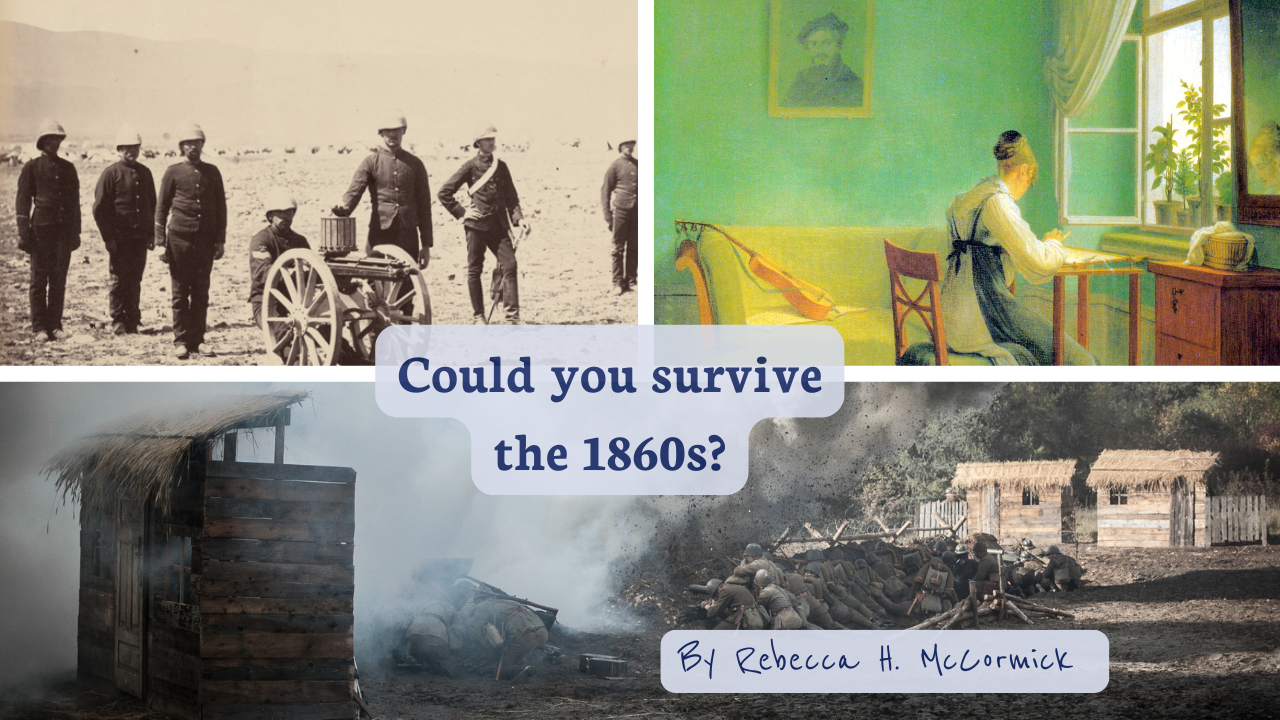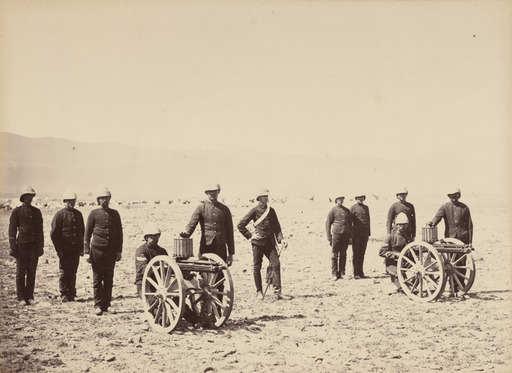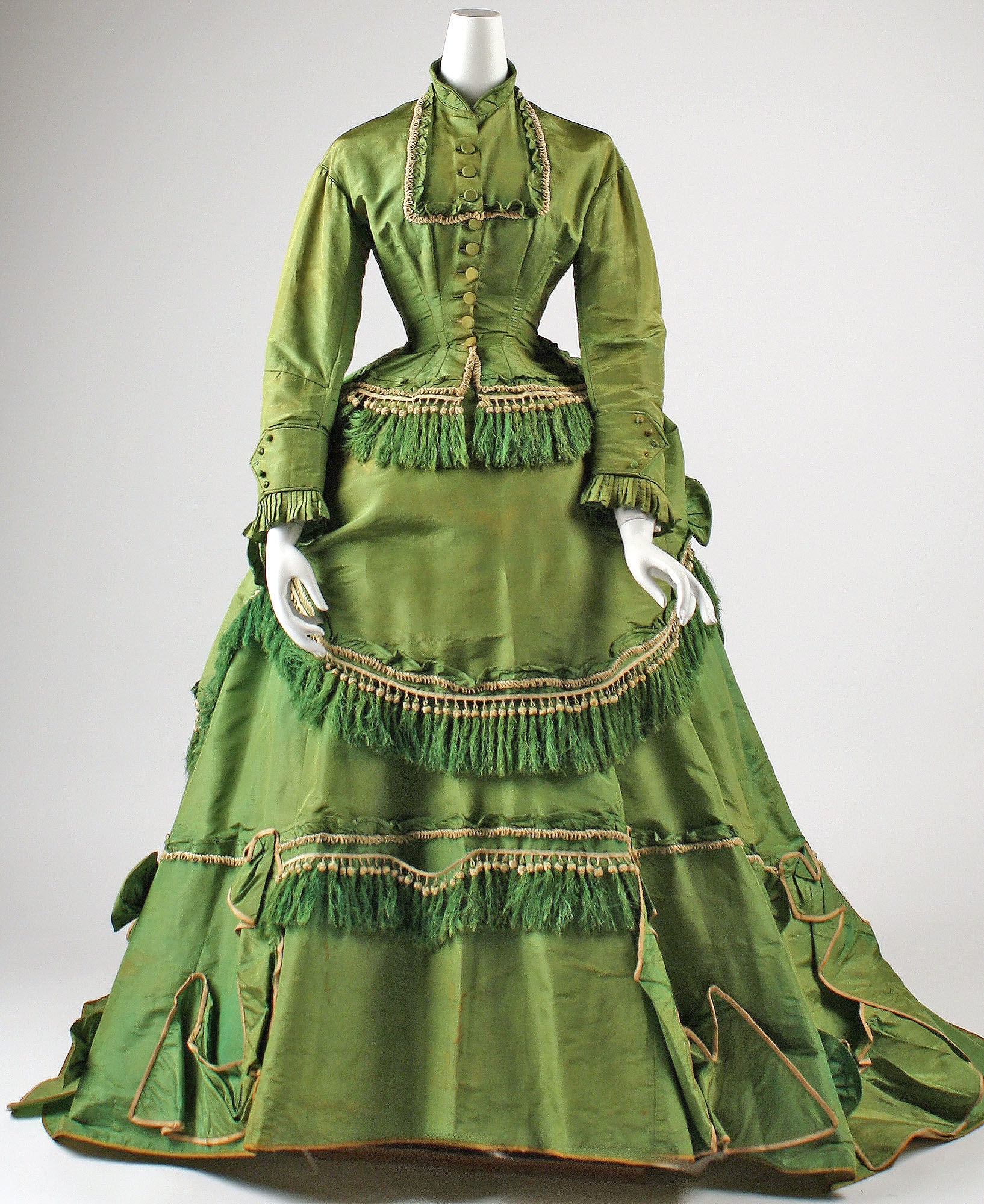
As we prepare to release History Unboxed 1860s, we here at the HUB ask ourselves: “would we have survived the 1860s?” No decade in the nineteenth century seems to be trying as hard to create things that sicken, maim, or kill. Let’s go over a few.
Machine guns
Firearms had been used in warfare in China since the 10th century CE, but technological advancements thanks in part to the Industrial Revolution led to an explosion in machine gun-style weapons across Europe and the United States. The Gatling gun was the most well-known and popular by far and was used in conflicts across the globe. From 1861 when it was invented to 1910, it was used in wars on five continents from the American Frontier Wars and Civil War to the Franco-Prussian War and numerous Japanese conflicts. The Gatling gun and ones like it were operated with a hand crank and revolving barrels. It was able to fire continuously while being cranked without the constant need to reload like older single-shot pistols or longarms. It could fire 200 times per minute. Compare that to the Springfield Model 1861 rifle which was the most used weapon in the American Civil War which fired about 3 shots per minute. It was one of the deadliest weapons of its time.
Dynamite
The 1860s reshaped the world, but this 1860s invention literally reshaped the earth. Dynamite, invented in 1866 by Swedish chemist Alfred Nobel, quickly gained widespread use across the world. It was seen as an alternative to the weaker and more temperamental black powder that had been used to create explosions since the ninth century CE. Nobel saw it as a way to revolutionize hard labor. Instead of picking out mountains by hand, dynamite could be used to make way for bridges, tunnels, and railroads. But within 3 years, "Nobel's Blasting Powder" was being used in war.
Arsenic
If you think that you can survive the 1860s by staying at home, we have bad news for you. Even your house and clothes may be trying to kill you. Any fashionable lady in the 1860s just had to wear Scheele’s Green or Paris Green. These arsenic-based pigments were used in cloth, wallpaper, and even foods like candy. (You can learn more about the history of candy in History Unboxed Going West .) People had noticed that these green-dyed articles were connected with women and children getting sick and dying, but the color didn’t fall entirely out of favor until the end of the 1860s.


